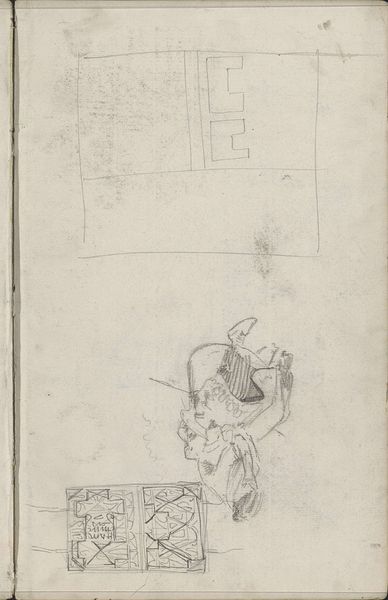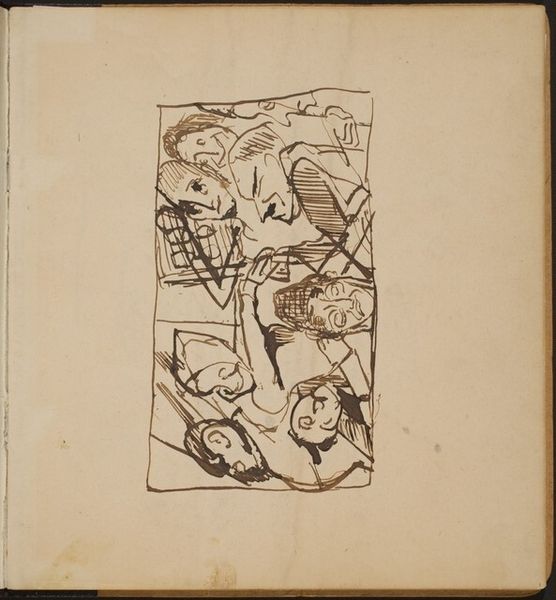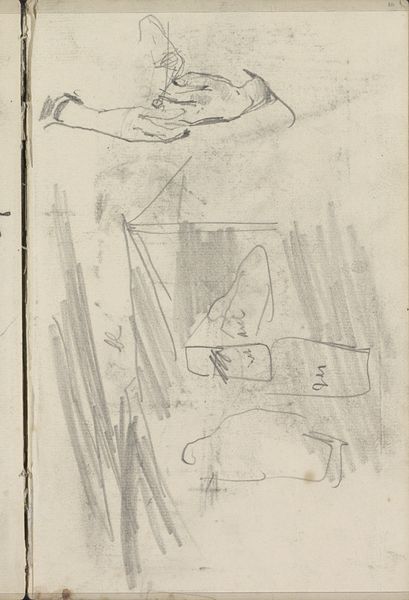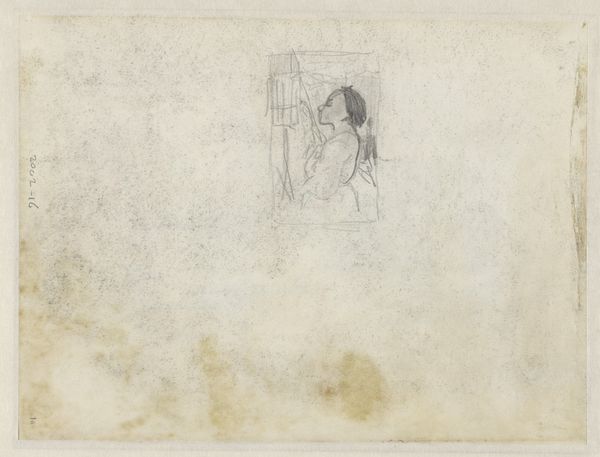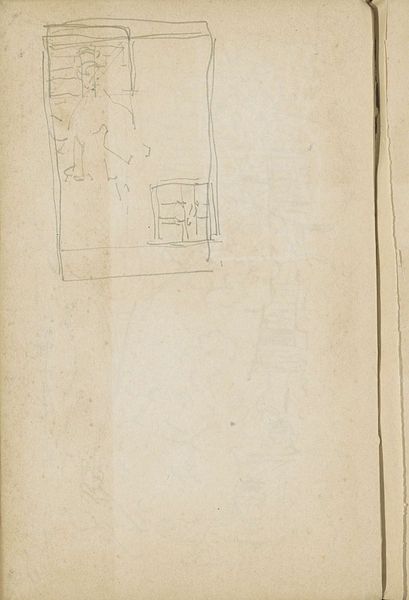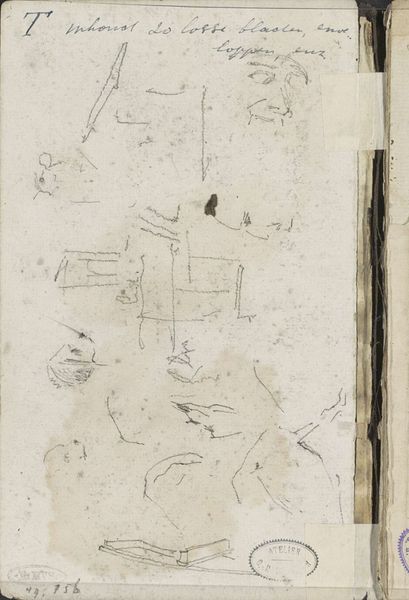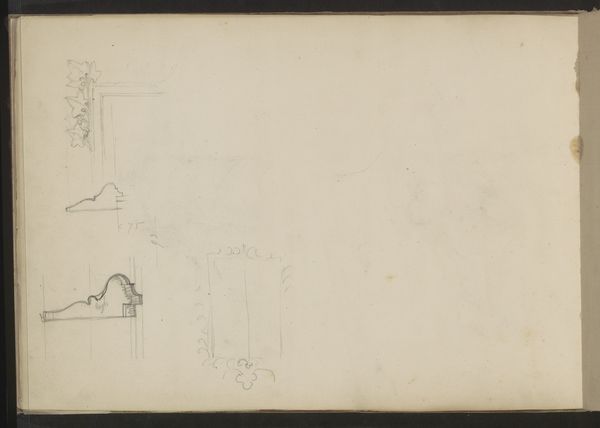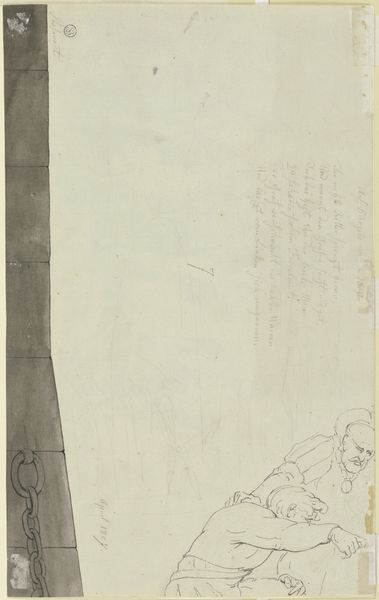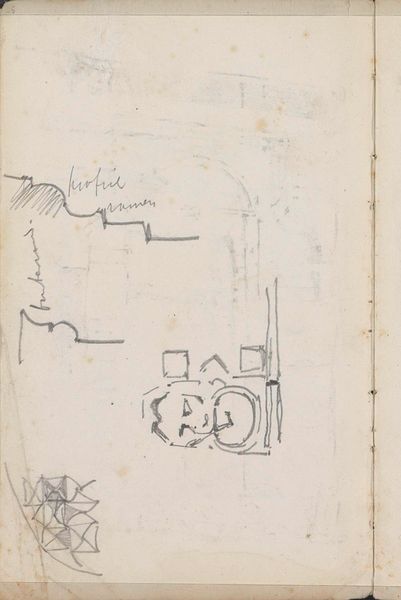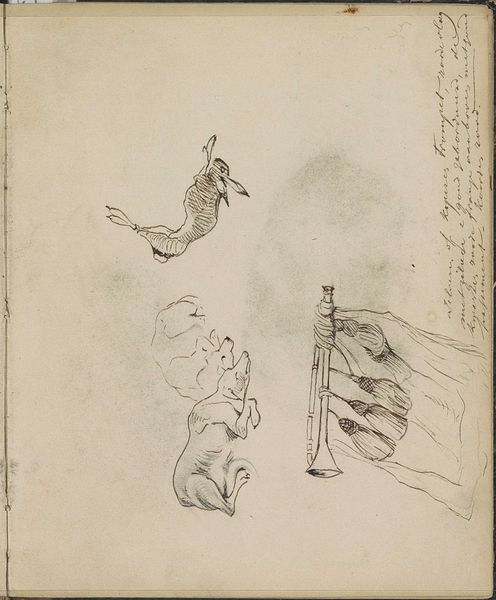
drawing, ink, pen
#
drawing
#
form
#
ink
#
ink drawing experimentation
#
pen-ink sketch
#
line
#
sketchbook drawing
#
pen
#
realism
Dimensions: height 200 mm, width 165 mm
Copyright: Rijks Museum: Open Domain
Curator: Look at the rough and ready marks in Theo Nieuwenhuis' pen and ink drawing, entitled "Beslagwerk op een Duitse kist," which translates to "Hardware on a German Chest." It's dated somewhere between 1876 and 1951 and part of the Rijksmuseum's collection. It's quite unassuming. Editor: The drawing style itself projects a sort of functional aesthetic. It almost looks like a schematic, quickly jotted down. Curator: Yes, there is an almost archaeological approach in the artist’s focus on the structural and ornamental details of the chest, reducing its essence into mere representational fragments. Editor: Exactly. And how do these elements fit into a broader cultural understanding of craftsmanship? A chest is far from simply functional. What status does such an intricate thing bestow on its owner? I am looking for the social framework. Curator: Note that, particularly within Germanic symbology, chests served more than mere practical ends. In many ways they were emblems of both safeguarding, containing worldly goods, and as a reflection of domestic order. A well-made, beautifully adorned chest would communicate values and aspirations. Editor: So, the artist then may be exploring those values and aspirations too? What happens when these sorts of mundane items are divorced from that framework? Placed under gallery lighting? Curator: It presents an artifact outside its utility, inviting us to reconsider not only what we value aesthetically but also how cultural memory can inhere even in commonplace objects. It is an almost forensic reading of an object through drawing. Editor: I see this now. I imagine the piece serving as a prompt, perhaps encouraging a rethinking of the museum’s relationship to those histories represented in objects we usually gloss over. Curator: Indeed. This drawing, rendered simply, prompts us to dig beneath surfaces, literal or symbolic, revealing the wealth of narrative an unassuming object can contain. Editor: Perhaps a fitting point on which to end – a reminder that art exists not just within museums, but speaks directly about the cultures surrounding them.
Comments
No comments
Be the first to comment and join the conversation on the ultimate creative platform.
